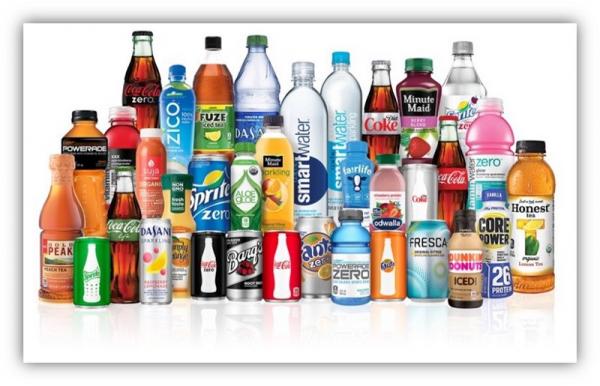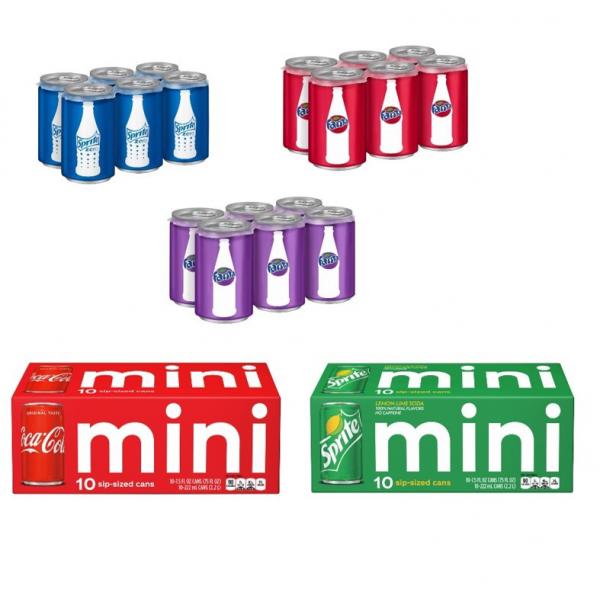October 5, 2017
The Stories Behind the Work: The Coca-Cola Company
Q: What motivated Coca-Cola to join the industry effort to reduce the consumption of calories and sugar from beverages?
A: What people want from beverages today is much different than what they wanted just 5–10 years ago. We are following consumers to the drinks and trends they want, which include less sugar, smaller sizes, natural and organic ingredients and new options across a rapidly expanding portfolio of beverage choices.
We also recognize that while sugar in moderation is fine, overconsumption of sugar isn’t good for anyone. Our work with our peers in the beverage industry is challenging us all to find new innovative ways to help people reduce the sugar and calories they get from beverages. This is good for both our industry and the communities, customers and consumers we serve.
Q: Impacting consumer consumption is more complex than simply increasing access to different products — can you explain how Coca-Cola plans to achieve this ambitious goal?
A: We’ve had great success on previous voluntary initiatives with our industry partners to remove full-calorie soft drinks from schools and put calorie information up front on packages so people can make informed decisions about their beverages.
What we’re doing now is expanding our focus to help increase awareness and trial of beverages with less sugar, no sugar or in smaller package sizes.
For example, in 2016 we launched a new marketing strategy for Coca-Cola that increases the profile of zero- and reduced-sugar variants of Coca-Cola in our advertising and communication, while underscoring our commitment to consumer choice.
Another recent example of our commitment to invest in zero-sugar drinks is our re-launch of Coke Zero — now called Coke Zero Sugar. We recognized an opportunity to give Coke Zero a boost and encourage more Coca-Cola fans to try a delicious zero-sugar product. Through in-house innovation, we developed an even better-tasting recipe that delivers real Coca-Cola taste with zero sugar and zero calories.
We changed the name to Coca-Cola Zero Sugar because our research showed us that some people didn’t realize that Coke Zero did not contain sugar or calories. We wanted the name to be as clear and descriptive as possible.
Since the launch, the brand’s growth has accelerated. And based on our experience in the UK and the early results here, we believe it can take Coke Zero Sugar to a new level.
We are also getting our drinks in people’s hands via sampling efforts — in store and out of store — in places our consumers live, work and play. This year, we refreshed our graphics for product sampling at community events to showcase even more of our portfolio of brands with a new tagline, “Less Sugar Never Tasted So Good,” that performed strongly in testing with consumers.
Q: What do you think your biggest challenge is to achieving the BCI goal?
A: When you look at the fact that our industry has already achieved a 23% reduction of calories consumed from sparkling soft drinks per person per day in the United States since 2001, the challenge ahead of us is to build on these efforts and accelerate sugar reduction across our beverage portfolio.
Continuing to increase trial of drinks with less or no sugar is key to our efforts to achieving our goals, as is further diversification of our total beverage portfolio, which already includes more than 800 beverages — 250 of which contain no sugar.
For our leading trademark — Coca-Cola — this is where the launch of Coke Zero Sugar is important. Even as the diet soda category overall has been under pressure as consumers’ tastes shift and change, we’ve continued to see Coke Zero Sugar grow in the United States. With the improved version — Coke Zero Sugar — we look forward to building on this momentum as we introduce more consumers to its new, improved taste.
Meanwhile, we continue to invest in more unsweetened or less-sweet products like bottled waters and teas. We will have to continue to support and drive that growth as a complement to growing no-sugar sparkling soft drink sales to reach our goal.
Q: What can customers expect to see from Coca-Cola in the coming months, related to decreasing calories and sugar in your products?
A: Eating and drinking less sugar is an increasingly important issue for many people. Our progress to date is just the beginning.
We are innovating in new and exciting beverage categories, including areas like sparkling waters and juices, organic teas, grab-and-go coffee, coconut waters, value-added dairy, and innovation within our existing sparkling soft drink portfolio like Coca-Cola Life, which is a reduced-calorie cola sweetened with cane sugar and stevia leaf extract.
We will also continue to focus on small packaging innovation, exploration and expansion — through packages like mini-cans and bottles — so that we can continue to help people moderate their consumption of sugar. These smaller, convenient packages continue to grow at double-digit rates within our business and we will continue to respond to this clear consumer demand for less sugar and less calories in the drinks we sell.
You’ll also continue to see us make calorie and nutrition information clear and accessible so people can make more informed choices for themselves and their families without the guesswork. For example, while the deadline for a new Nutrition Facts Panel from the Food and Drug Administration has been delayed, our commitment to provide people with clear information remains unchanged. We are already rolling out this new labeling across our portfolio, which includes clear labeling of added sugars in our drinks.




